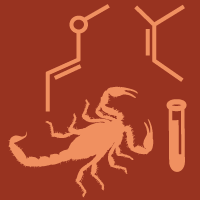Topic Editors

Advances and New Insights into Diversity of Cyanobacteria
Topic Information
Dear Colleagues,
Cyanobacteria played a pivotal role in changing the composition of the Earth’s early atmosphere due to their ability to produce oxygen though the photosynthesis. Nowadays, cyanobacteria have an important role in the ecosystem as primary producers and as microorganisms that can fix the atmospheric nitrogen. They occupy a wide variety of niches, including extreme habitats such as deserts, hot springs, and/or polar regions, thanks in part to their ecological adaptation capacity. Furthermore, cyanobacteria show great morphological diversity, including unicellular species to multicellular filamentous forms with branching patterns. In recent decades, there have been great advancements in our knowledge about the diversity of cyanobacteria, with the description of the numerous genera and species using a combination of morphological, ecological and molecular methods called polyphasic approaches. However, there are still large gaps in knowledge regarding these microorganisms, especially in the biodiversity hotspots (regions with a high level of species diversity, many of them endemic), and the most distant regions and inhospitable areas on the Earth. On the other hand, we are in a time where climate change is affecting our environment (habitat loss, changes in geographical ranges, declines in abundance, etc.), which poses unknown challenges for cyanobacterial survival.
Aim: The aim of this Special Issue is to collect the recent findings on cyanobacterial diversity, from fundamental studies that help increase our knowledge of the world's cyanobacteria, especially in those environments less studied as hotspots or marine environments to studies for evaluating the effects of climate change on cyanobacterial diversity and their diverse responses for adapting to climate change.
Scope: For this Special Issue, we invite you to send original research papers concerning any aspect of cyanobacterial diversity using molecular techniques (from specific gene-based PCR, sequencing and phylogeny to metagenomics), metabolomic techniques that provide a snapshot of the diversity of natural chemical compounds in nature and especially polyphasic approaches, and combination of different methods to an improved resolution. We also wish to understand the effects of both climate change and human activities on the cyanobacterial diversity in diverse environments, paying more attention to the unique diversity of the dry regions of the world. Articles that examine adaptation mechanisms of cyanobacteria in extreme environments and ecophysiology studies will be also accepted. Moreover, we encourage researchers from related fields to contribute high-quality review papers highlighting the latest developments in their fields.
Dr. Esther Berrendero Gómez
Dr. M. Ángeles Muñoz Martín
Dr. Elvira Perona Urízar
Topic Editors
Keywords
- taxonomic and functional diversity
- extreme or understudied environments
- biodiversity hotspots
- climate change
- cyanobacterial responses to environmental conditions
- tools for monitoring cyanobacterial diversity
Participating Journals
| Journal Name | Impact Factor | CiteScore | Launched Year | First Decision (median) | APC | |
|---|---|---|---|---|---|---|

Diversity
|
2.4 | 3.1 | 2009 | 17.8 Days | CHF 2600 | Submit |

Life
|
3.2 | 2.7 | 2011 | 17.5 Days | CHF 2600 | Submit |

Microorganisms
|
4.5 | 6.4 | 2013 | 15.1 Days | CHF 2700 | Submit |

Plants
|
4.5 | 5.4 | 2012 | 15.3 Days | CHF 2700 | Submit |

Water
|
3.4 | 5.5 | 2009 | 16.5 Days | CHF 2600 | Submit |

Phycology
|
- | - | 2021 | 15.7 Days | CHF 1000 | Submit |

Toxins
|
4.2 | 7.5 | 2009 | 18.4 Days | CHF 2700 | Submit |

MDPI Topics is cooperating with Preprints.org and has built a direct connection between MDPI journals and Preprints.org. Authors are encouraged to enjoy the benefits by posting a preprint at Preprints.org prior to publication:
- Immediately share your ideas ahead of publication and establish your research priority;
- Protect your idea from being stolen with this time-stamped preprint article;
- Enhance the exposure and impact of your research;
- Receive feedback from your peers in advance;
- Have it indexed in Web of Science (Preprint Citation Index), Google Scholar, Crossref, SHARE, PrePubMed, Scilit and Europe PMC.



